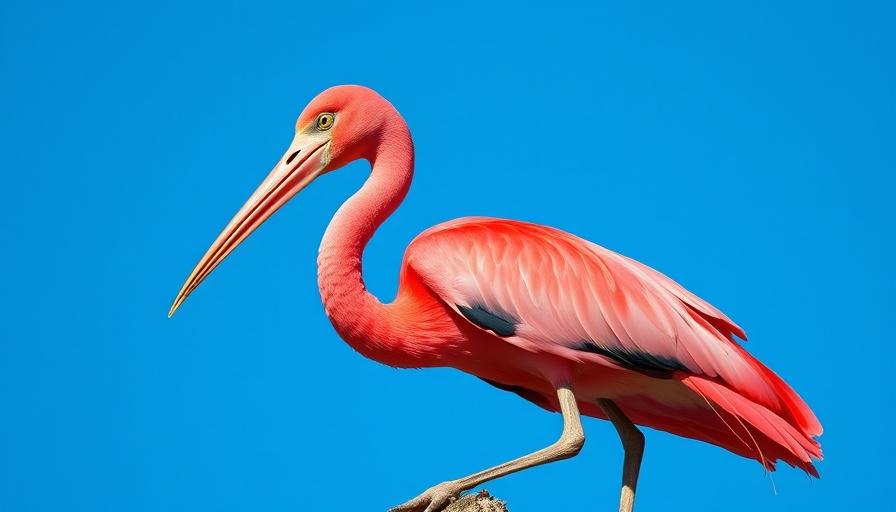
The Vibrant World of the Espátula Rosada
Among the myriad of colors that adorn the avian world, few are as eye-catching as the vivid pink of the Espátula Rosada. This remarkable bird, found along the Gulf of Mexico year-round, stands as a testament to nature's creativity and appeal. Its stunning plumage, highlighted by intense shades of pink and accented with splashes of crimson, commands attention against both the lush landscapes of its habitat and the azure skies overhead.
A Unique Feeding Technique
What sets the Espátula Rosada apart not only lies in its beauty but also in its fascinating feeding behavior. It employs a method known as tactile foraging, gliding gracefully across shallow waters with its distinctive spatula-shaped bill submerged. By sweeping its head from side to side, it detects unsuspecting fish and crustaceans beneath the water's surface before snapping its bill shut in a swift motion—a remarkable adaptation showcasing its prowess as a hunter.
Distinctive Characteristics
The physical features of the Espátula Rosada contribute to its unique identity. While its body flaunts a vibrant pink coloration, its head, devoid of feathers, reveals a more peculiar appearance with skin tones ranging from yellow to gray. The large, flat bill aids in its staple feeding technique, while its striking scarlet eyes are an eerie contrast to its soft exterior.
Conservation and Awareness
As striking as the Espátula Rosada may be, its presence serves as a reminder of the delicate balance within our ecosystems. Awareness of such species not only enriches our understanding of biodiversity but also highlights the importance of conserving their habitats—ensuring these beautiful creatures continue to thrive for generations to come.
The Lone Pink Wonder in the Americas
Curiously, the Espátula Rosada is the only species of spoonbill found in the New World, with its six relatives residing in the Eastern Hemisphere all coated in white feathers. This unique positioning makes the Espátula Rosada not just extraordinary in terms of coloration but also an important symbol of the diversity present in North American wildlife.
 Add Row
Add Row  Add
Add 




 Add Row
Add Row  Add
Add 

Write A Comment